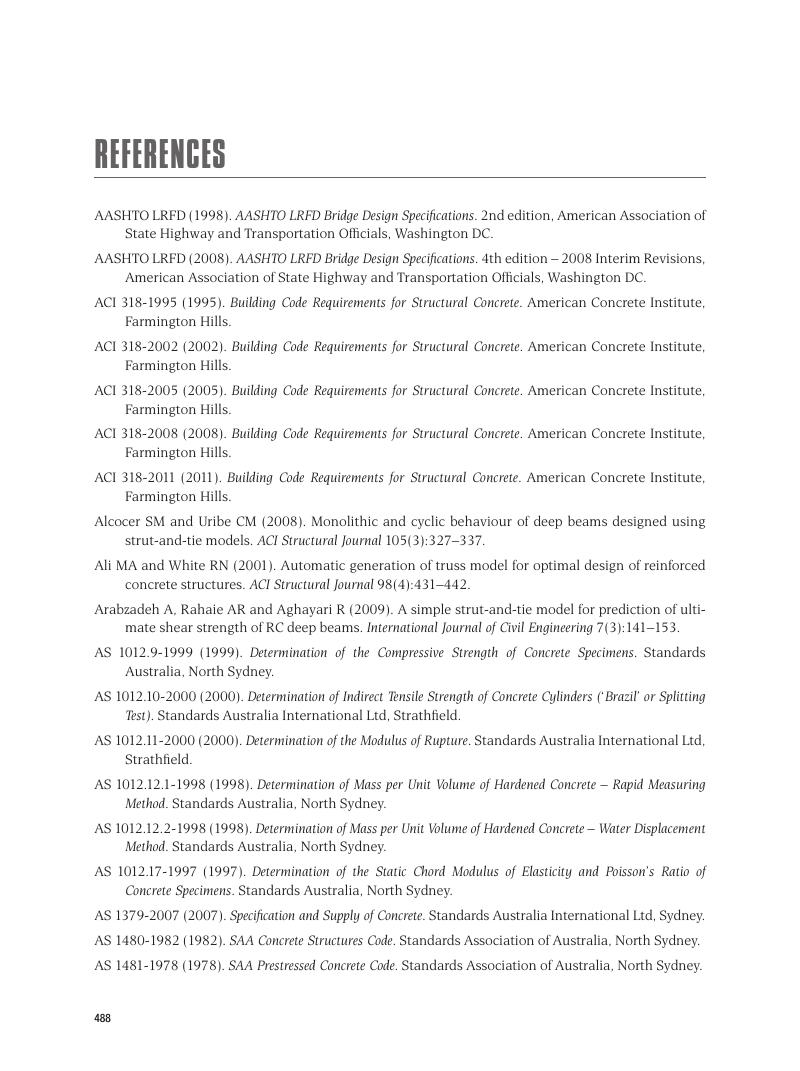Book contents
- Frontmatter
- Dedication
- Contents
- Preface to the first edition
- Preface to the second edition
- Acknowledgements
- Notation
- Acronyms and abbreviations
- Part 1 Reinforced concrete
- Part 2 Prestressed concrete
- Appendix A Elastic neutral axis
- Appendix B Critical shear perimeter
- Appendix C Strut-and-tie modelling of concrete structures
- Appendix D Australian Standard precast prestressed concrete bridge girder sections
- References
- Index
- References
References
- Frontmatter
- Dedication
- Contents
- Preface to the first edition
- Preface to the second edition
- Acknowledgements
- Notation
- Acronyms and abbreviations
- Part 1 Reinforced concrete
- Part 2 Prestressed concrete
- Appendix A Elastic neutral axis
- Appendix B Critical shear perimeter
- Appendix C Strut-and-tie modelling of concrete structures
- Appendix D Australian Standard precast prestressed concrete bridge girder sections
- References
- Index
- References
Summary

- Type
- Chapter
- Information
- Reinforced and Prestressed ConcreteAnalysis and Design with Emphasis on Application of AS3600-2009, pp. 488 - 495Publisher: Cambridge University PressPrint publication year: 2013



